Advanced power management techniques have become an important factor.
by Paul Ulezko, Technical Marketing Engineer, Semiconductor and Electronics at NI/Emerson
As technology advances, electronic devices become increasingly complex, making power consumption management a significant challenge. This is most pronounced in battery-powered devices such as wearables, augmented reality (AR) glasses, laptops, and phones to mention a few, where efficient power management can significantly extend battery life and reduce charging frequency.
To meet the demand for energy-efficient devices, advanced power management techniques have become an important factor. These techniques play a critical role in optimizing power consumption, reducing heat generation, and enhancing overall efficiency. Effective power management influences battery life along with device reliability and performance due to decreased overall thermals. It has evolved into a critical aspect of device design, no longer a secondary consideration.
By adopting advanced power management techniques in parallel with accurate validation instrumentation, devices can achieve significant power reductions, extend battery life, enhanced reliability, and user comfort. No one likes a gadget that doubles as a hand warmer!
Dynamic voltage scaling
Dynamic voltage scaling (DVS) is a key technique in reducing the average power consumption in embedded systems. By reducing voltage, power consumption decreases exponentially. DVS offers numerous benefits, including reduced power consumption that helps with an increased battery life, enhanced device reliability, and improved thermal management. This technique is widely used in microprocessors, memory modules, and wireless communication modules as these can use higher power in electronic devices.
The impact of DVS is evident in various applications. Microprocessors are widely used in smartphones, laptops, and servers to optimize performance and reduce power consumption and benefit greatly from DVS. Data acquisition systems (DAQs) can be used in conjunction with DVS to test various performance- and power-related aspects. DAQs can measure voltage, current, and power consumption at various voltage levels required for DVS. In addition, DAQ can measure temperature, collect data on system performance, such as execution time and throughput, and ensure correct voltage levels and power consumption. These power and performance measurements typically lead to reduced heat generation, increased battery life, and improved overall system reliability.
Power and clock gating
Power gating and clock gating are additional techniques that disable power to idle components, minimizing leakage current and reducing power consumption. Power gating disables the power supply to a specific block or module and reduces leakage current and dynamic power consumption. An example would be your phone’s display, which is turned off when not in use. Clock gating disables the clock signal to a specific block or module and reduces dynamic power consumption. An example would be clock gating the phone processor’s idle loop to reduce power consumption.
DAQ plays a crucial role in power and clock gating. These tests require accurate power consumption measurements and, as noted earlier, DAQs can measure voltage, current, and power, which are crucial elements. DAQs can help validate the effectiveness of power gating and power-up and power-down sequences, as well as detect anomalies and faults related to power modules.
Overall, these methods are effective in microprocessors, memory modules, wireless communication modules, and battery-powered devices like smartphones and wearables. Sleep modes allow devices to enter low-power states during inactivity, while leakage current reduction techniques minimize current leakage. Adaptive voltage and frequency scaling dynamically adjusts voltage and frequency to match workload requirements. For example, the power consumption of a microprocessor is lower during a low activity state of 0.8V at 100MHz vs. a high activity gaming state of 1.4V at 2.5GHz. Depending on the application, you can see higher voltages and frequencies, but controlling the power and clock can reduce power consumption, extend system battery life, and improve overall system reliability.
Lab validation
The implementation of advanced power management techniques can improve overall energy efficiency. From my past validation lab observations, devices such as smartphones, laptops, and wearables have achieved significant power reductions, extended battery life, and enhanced device reliability. For instance, using advanced power management techniques, selectively shutting off unused circuit blocks, and optimizing data transfer on a smartphone can lead to extended battery life, improved thermal management, and enhanced device reliability.
To validate the effectiveness of these techniques, my setup consisted of a custom-built printed circuit board (PCB) assembly that enabled microprocessor, memory module, and wireless communication module measurements using DAQs and LabVIEW software. Different functional states were measured: idle when the device is not used, low power mode for light use, and sleep states when the device is turned off. Without getting into technical details, there was significant power reduction measured between each state when advanced power techniques were utilized. Allowing rampant power consumption during an idle state is not desired.
To harness the full potential of advanced power management techniques, measurement instruments must provide accurate and relevant feedback to designers. High performance data acquisition instruments with advanced filtering and digital multimeter (DMM)-like features can enable repeatable nanovolt measurements during DVS and power gating validation. For example, PXIe features Auto Zero to remove instrument offset. Each signal conditioning path of the PXIe-4309 has an internal channel to measure its offset error. When enabled, the offset is measured and subtracted from the input measurement, effectively canceling the offset error. Another example feature is “chopping mode” to minimize flicker and thermal electromagnetic (a.k.a. EMF) noise. These types of features can ensure more precise measurement when performing advanced measurement techniques during validation.
On the development side, designers must adopt a power-aware design approach, which involves analyzing workload requirements, selecting suitable power management techniques, implementing power management algorithms, and monitoring and optimizing power consumption.
Emerging trends promise even greater efficiency gains, including artificial intelligence (AI) and machine learning (ML) for power optimization, energy harvesting and regeneration, advanced battery technologies, wireless power transfer, and charging.
Conclusion
Advanced power management techniques have revolutionized the electronics industry. Effective power management is no longer a luxury; it’s a necessity. By embracing these techniques and advanced measurement instruments, designers can create energy-efficient, reliable, and high-performing devices. In other words, your phone won’t turn into a pocket-sized furnace anymore!

